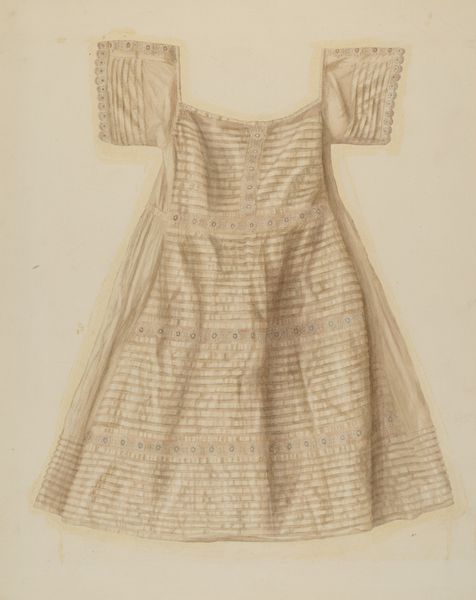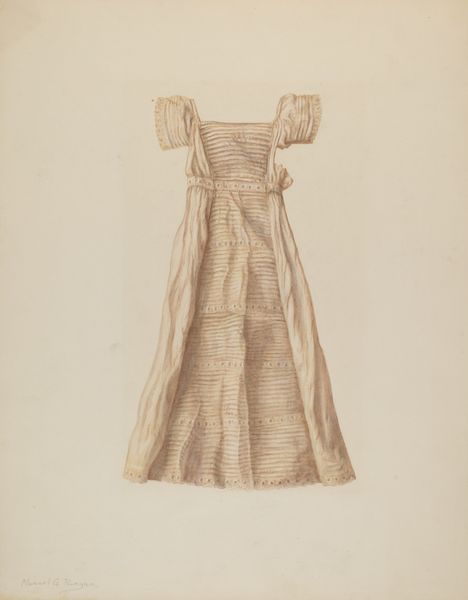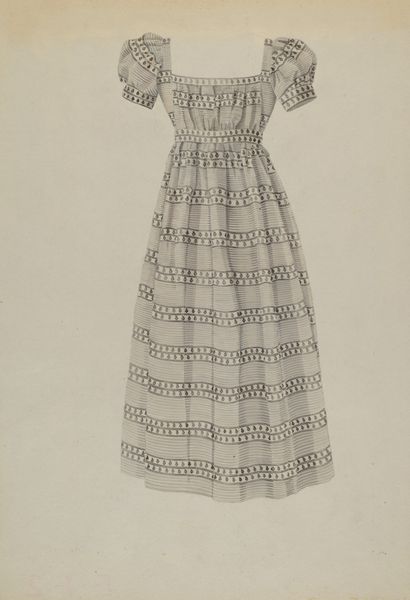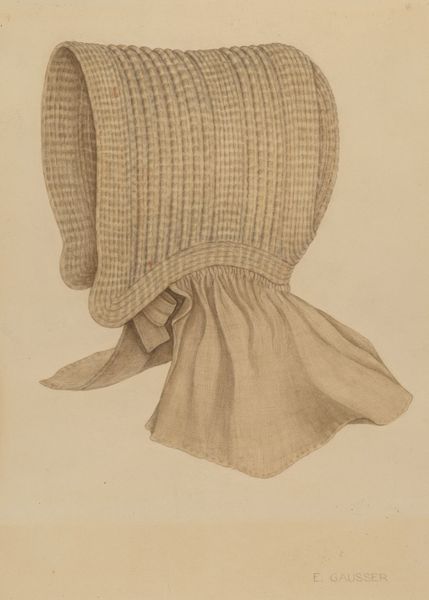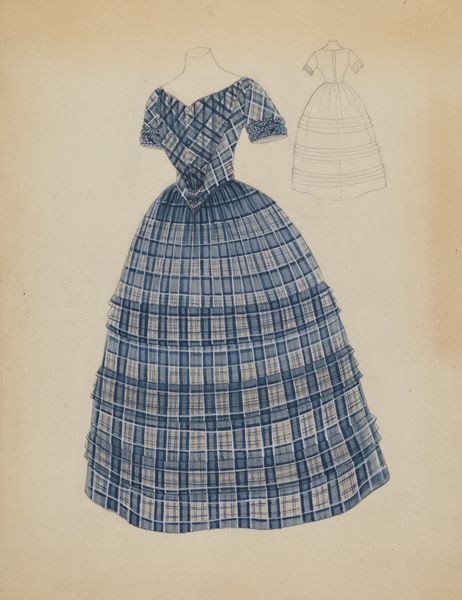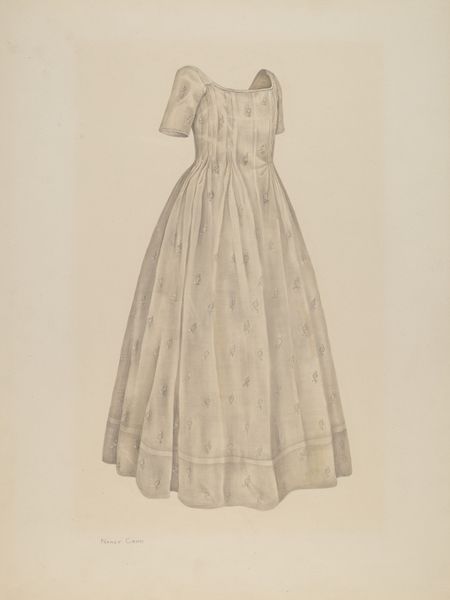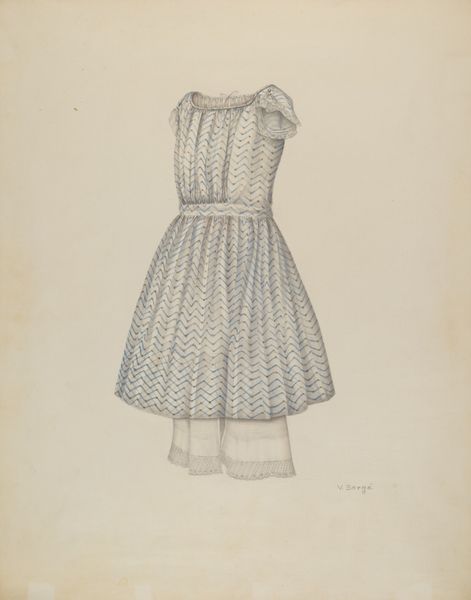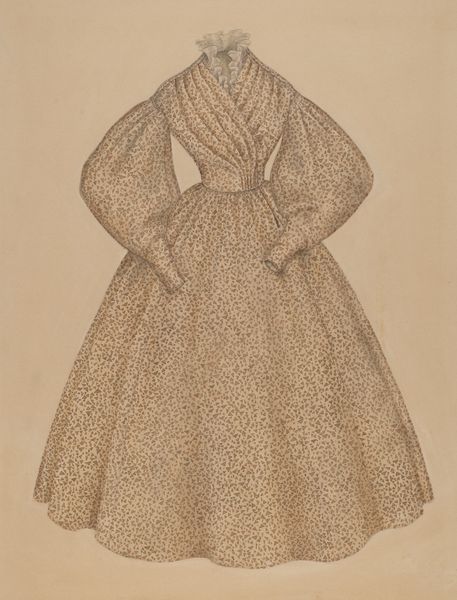
drawing, paper, pencil
#
drawing
#
figuration
#
paper
#
pencil drawing
#
pencil
#
realism
Dimensions: overall: 42.1 x 35.1 cm (16 9/16 x 13 13/16 in.)
Copyright: National Gallery of Art: CC0 1.0
Editor: So, here we have "Dress," a pencil drawing on paper from around 1937 by Melita Hofmann. It's… oddly serene, isn't it? The pattern is so delicate, almost hypnotic. What do you make of it? Curator: Hypnotic is a great word! To me, it whispers of a quiet life, maybe even constraint, despite its loveliness. Do you notice how the dress is presented? Editor: Yes, it's just floating there, without a body. Ghostly almost. Curator: Precisely! Perhaps it represents the *idea* of womanhood in that era, rather than a lived experience? Consider the '30s. A dress like this speaks of domesticity, of a certain social role. Hofmann might be subtly critiquing, or perhaps idealizing, the role. Or both, art often holds more than one intention! What do you see in the sleeves? Editor: They're quite full, but almost droopy. It reminds me of the phrase, "wearing your heart on your sleeve." Were women meant to be overtly emotional then? Curator: That's an interesting link! Maybe the sleeves imply a controlled openness? These aren't explicitly billowing with joy; they seem…contained. What's the color telling you, if anything? Editor: It is faint and simple. Maybe luxury wasn't in her reach when creating the piece? Or maybe it has to do with women having limited choices? Curator: Wonderful observation. Hofmann probably uses faint tones deliberately. It almost makes us lean closer, to really see. Also, bear in mind that clothing rationing during the Depression, and soon WWII, would have impacted availability of fabrics. Art is always speaking to its cultural and historical circumstances, no matter how subtly. What are your overall feelings toward the drawing? Editor: I initially thought "serene," but I think the term is deceptive. The dress holds a lot of suppressed emotions and restrained dreams. Now that you mention history, the piece has another layer of somberness! Curator: Yes! That interplay is what makes it compelling. It initially charms us with a deceiving simplicity, then hints at layers of stories underneath the paper. I think that is what the artist tried to pass down to us. What do you think? Editor: I completely agree! This dialogue opened my eyes, I was too quick to assume that things are not what they seem to be, especially for a minimalist piece. Thank you.
Comments
No comments
Be the first to comment and join the conversation on the ultimate creative platform.
